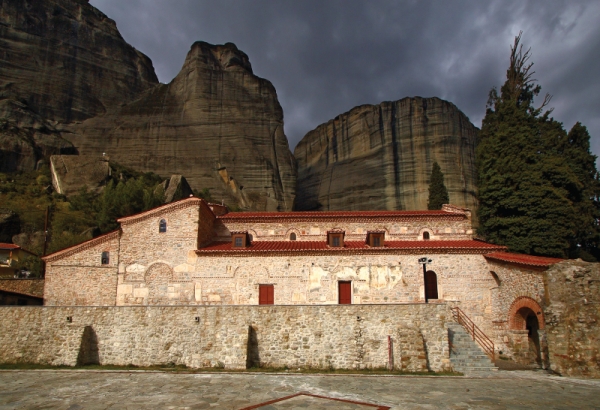BYZANTINE CHURCH OF THE ASSUMPTION OF VIRGIN MARY (PANAGIA) KALABAKA, (11th CENTURY)
The Church of the Assumption of Virgin Mary or as the locals call it, the Church of Panagia, is located in the old town. It is an important ecclesiastical monument of the Byzantine period, which is preserved in a very good condition and which used to be the seat of the Diocese of Stagon.
It was erected between the 10th and 11th century on the ruins of an early Christian basilica of the 4th century, which was also erected upon an Ancient Greek Temple of Apollo. It is in the rhythm of a three-aisled basilica with an elevated middle aisle.
In the southern wall, the Temple bears built-in marble sculptures from the idolatrous Temple, as well as from the early Christian Temple.
Inside the Temple, the marble ciborium of Altar and the ancient basin of sanctification in the Narthex, are remarkable. The unique in Greece and in the whole Christian territory marble Pulpit, is situated in the centre of the Temple, and it is of particular interest.
The murals of the Temple are frescoes, painted by famous and great hagiographers and are dated from the 12th to the 16th century.
The wood-carved temple belongs to the remarkable works of the post-Byzantine era and has been manufactured during the 17th century.
Remains of the majestic mosaic floor of the early Christian Church, are preserved in the northern aisle of the Temple, inside the Holy Step.

